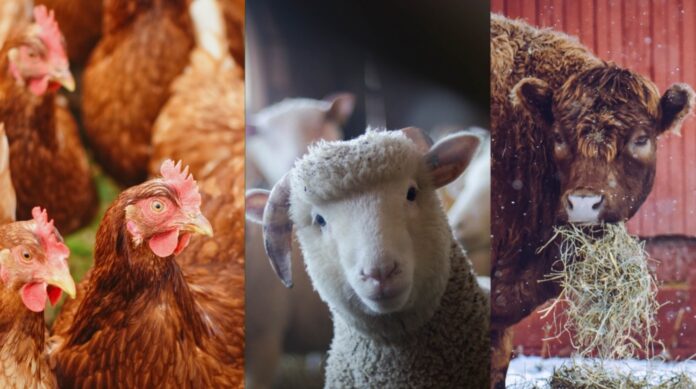The Alaska Division of Agriculture is inviting farmers, ranchers, and other agricultural stakeholders to a special listening session on July 17, from 6-8 pm., to explore the formation of a cooperative centered on the Palmer slaughter plant.
The meeting will be held both in-person at 1801 S Margaret Dr., Suite 12, Palmer, and online via Zoom (link here Meeting ID: 945 7520 9433, Passcode: 0LR7bU).
The focus of the session is to discuss the feasibility of forming a co-op to provide a long-term solution for managing and operating the Palmer facility in a way that supports Alaska’s livestock producers.
Barbara Johnson from the University of Alaska Anchorage’s co-op development group will deliver a 10–15 minute presentation on the core values and seven guiding principles of cooperative organizations.
A cooperative, or co-op, is a business or nonprofit owned and operated by a group of individuals for their mutual benefit. In agriculture, co-ops are often used to pool resources, share costs, and give members greater control over the processing and distribution of their products. Unlike private corporations that earn profit for shareholders, co-ops exist to serve their members—who are also their owners.
The seven principles that typically guide cooperatives include:
- Voluntary and open membership
- Democratic member control
- Member economic participation
- Autonomy and independence
- Education, training, and information
- Cooperation among cooperatives
- Concern for community
Slaughterhouses are vital infrastructure for livestock producers, but they are expensive to operate and require consistent demand, economies of scale, and regulatory compliance. In many Lower 48 states, agricultural co-ops have successfully taken over or built processing facilities that serve local and regional producers, giving them more control over processing schedules, quality standards, and pricing.
In places like Montana, Wisconsin, and Missouri, co-ops have enabled small-scale producers to band together to operate meat processing facilities that meet USDA standards. These cooperatives often benefit from public-private partnerships, grant funding, and strong member commitment to shared goals.
In Alaska, where food security and local meat production remain ongoing challenges, a co-op model for the Palmer plant could provide producers with a sustainable, community-driven alternative to government or private-sector management.
Following Johnson’s presentation, attendees will be invited to participate in an open discussion about how a cooperative might work in the Mat-Su region, who might participate, and what structure would best support local needs. Input from this session will help shape future meetings and decisions about forming a formal cooperative and determining its scope of work.
The Division of Agriculture is encouraging anyone interested in the future of Alaska’s agricultural economy to attend and share their thoughts—whether they are producers, consumers, educators, or advocates.

Don’t eat meat
How are you not too weak to type?
Why?
Do you really need an academic to tell you how to cooperate? When someone from UAA wants to tell you about “core values”, you know they’re talking down to you because they think you’re too dumb to know about these things. I’ll be surprised if this a nothing but a lot of blabber and no content.
Better yet — approve the deal, make it to the benefit of the community, be honest & be mindful of market demands — enjoy a good steak….
The first question that needs to be answered is how will the current owner be bought out. He isn’t well liked amongst the state agriculture community because of his pity party wining on Facebook amongst other things, and his business partner whose more involved in the day to day operations of the plant due to living in Sutton not Soldotna is even less liked in the Mat-Su. If these two, particularly the one more involved in running the plant currently, are going to continue to be involved I can see a lot of smaller ag producers who have their farm to client process needs fulfilled by the mobile slaughter guys and some of the private processors, or who have been butching themselves for years just staying away because of the risk associated with someone who has a history of screwing over their business partners and has to get new ones and employees frequently become they walk away, and is a lousy and vindictive neighbor to those near his leased lands in Pt Mac.
Nice photo Suzanne.
One can almost hear them saying, “Did somebody say slaughterhouse?”
Cracked me up.
Wasnt this slaughterhouse just bought out to save it from closure? Why are we now talking about a co-op? Some serious questions need to be answered, before we move forward with doing anything with this project especially if it involves hard working people money!
Did you remove my comments stating information your readers should know?
Stockman (above) says there is an issue about buying out the owner.
The “issue” is whether this source of production can be purchased by the SOA, and subsidized with prisoner labor, under a central committee as before it was sold in 2017.
Otherwise, put up or shut up.
‘https://donnliston.net/2024/11/alaska-meat-packers-pig-in-a-poke/